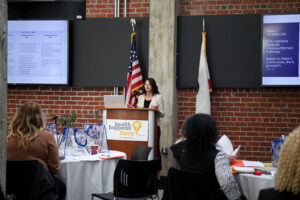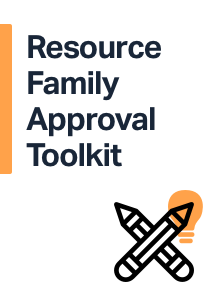Governor Jerry Brown signed the 2014 – 2015 California budget today, Friday, June 20, which includes a $30 million investment in the futures of foster children who are raised by relatives. This is the most important policy victory for foster children since the extension of foster care to age 21 through AB 12 in 2012.
The Approved Relative Caregiver Funding Option Program will allow counties to provide state foster care funding to foster children who currently receive CalWORKs benefits. Counties have to opt into the program by October 1, 2014 in order to get the funding from the state and the program specifies that the state will cover 100% of the cost of the program for the existing population of foster children placed with relatives. For the counties who opt in, the program will become effective January 1, 2015.
“This is a historic moment for California’s child welfare system that will benefit thousands of our foster children,” said Angie Schwartz, Policy Director for the Alliance for Children’s Rights. “Relatives are the backbone of our child welfare system and now, because of the incredible leadership of our state officials, these families will finally be supported.”
California has prioritized the placement of foster children with relatives for years, and with this budget move, it is now also prioritizing stability in those placements. Thanks to the intense leadership of the California State Assembly, the Department of Social Services, the philanthropic community, Governor Jerry Brown’s office and the efforts of the Step Up Coalition, led by the Alliance for Children’s Rights, counties have, for the first time, the opportunity to provide relative foster parents with the support they desperately need. In turn, this will lead to greater stability and improved long-term outcomes for these children.
“This is a strong statement that we value family members who want to provide a stable family situation for foster children. Sometimes this might be a grandparent on a fixed income or a brother or sister still in school and struggling themselves, but they still want to step up and give a stable home to these children in crisis,” said Assemblymember Shirley Weber. “As a state, we need to support that. I am especially pleased that both my Democratic and Republican colleagues agreed and voted in favor of allocating resources to keep families together and to give foster children a better chance at a good home.”
Research demonstrates the value of placing children with relatives. The most recent edition of the Stuart Foundation’s Invisible Achievement Gap found that students placed with kin often did better than their peers in other placements. Similarly, students in kinship placements were the most likely of foster care grade-12 students to graduate from high school. Conversely, foster youth in group homes were the least likely to graduate. Youth whose relative placements fail often get placed into group homes, which, on average, cost the state $100,000/year per youth. Relatives will now receive, on average, $9,800/year, to provide for the foster child in their care.
“The philanthropic community applauds the Step Up Coalition for their leadership and success in addressing inadequate support for relative caregivers in California,” said Pegine Grayson, Executive Director for the Walter S. Johnson Foundation. “We look forward to playing a role in raising awareness among counties so families benefit from this support.”
Equitable financial support is good news for the 36% of California’s nearly 60,000 foster children who are in the care of a relative. If counties opt into the program, this vulnerable population will now receive state foster care funding of around $820/month (for a 15 year old), which is what U.C. Davis found to be the minimum amount of support necessary to provide for a child’s basic needs. Currently, many children placed with kin are given around $369/month through CalWORKs, which barely makes a dent in meeting the essential needs of children. This causes families to struggle, especially grandparents living on a fixed income.
Tiffany Soto of Los Angeles took in her nephew and struggled to provide for him with CalWORKs support. “This will have far reaching impact as more children will find themselves being supported to remain in placements with relatives that are stable and compassionate,” said Tiffany. “Over time, this will ensure that more kids come out of foster care well-adjusted and prepared to be contributing members of society.”
California leaders have made an extraordinary investment in children who, without proper support, are at risk for lifelong poverty, homelessness, low educational attainment and unemployment. The decision to make the program a county option is consistent with the Governor’s realignment of California’s child welfare system. The onus is now on the counties to take advantage of state foster care funding for relatives by opting into the program by October 1, 2014. Counties who opt in will receive 100% of the funding necessary to provide foster care benefits to all of the relatives currently caring for children in foster care. Review the budget here (see section 11461.3).
This would not have happened without the support of the Budget Conference Committee members: Assemblymembers Shirley Weber, Nancy Skinner, Richard Bloom and Jeff Gorrell, and Senators Loni Hancock, Jim Nielsen, Mark Leno and Ricardo Lara.








